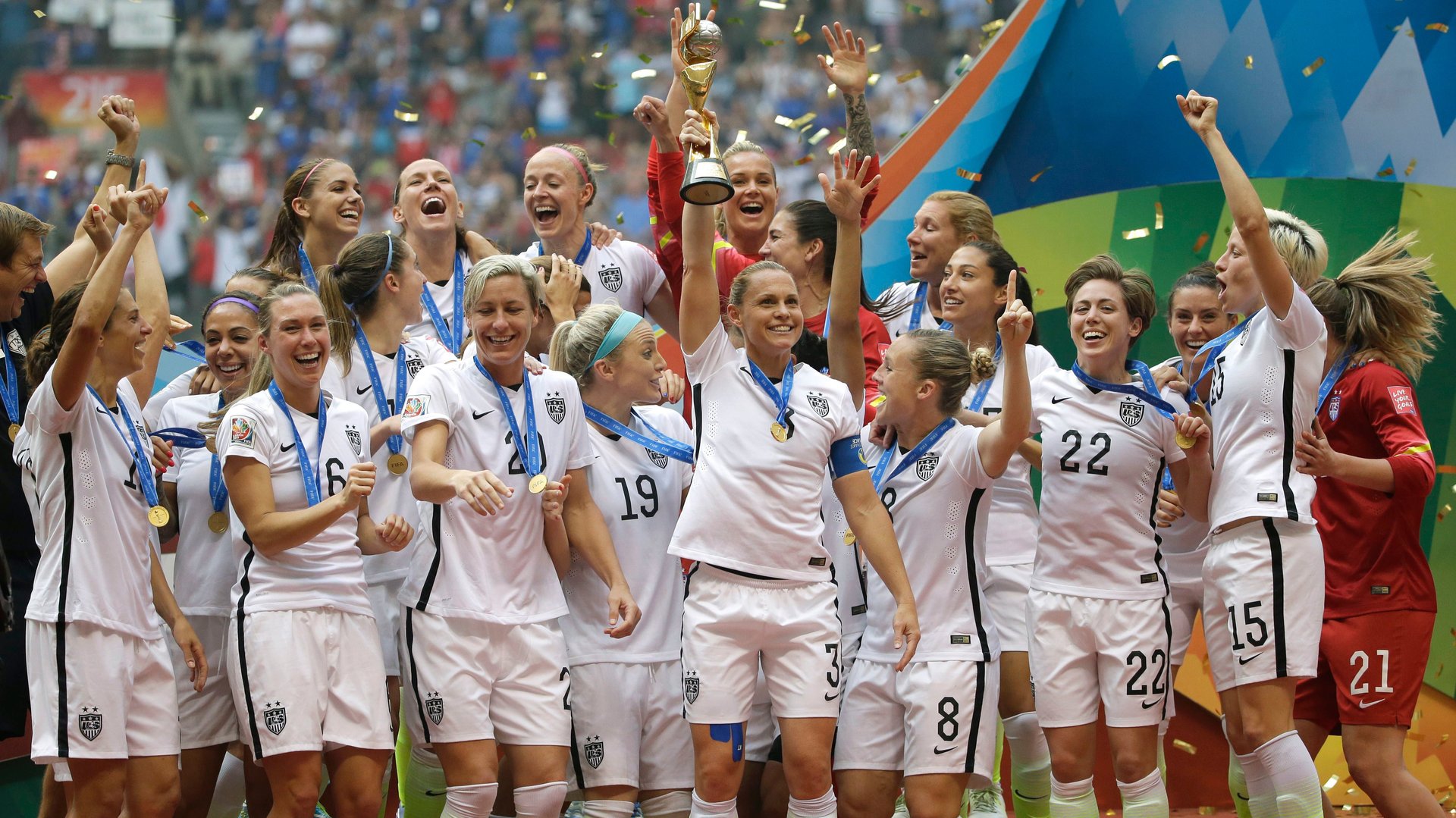6 charts to show anyone who thinks women’s soccer is treated equally to men’s
As World Cup confetti swirled around the heads of the victorious US women’s soccer team on July 5, it was clear to anyone watching that this was a win for the history books. But while Abby Wambach and company will return home heroes, they will leave Vancouver with considerably less prize money than even the worst men’s World Cup competitors. Indeed, men’s soccer teams who were eliminated in the first round of the 2014 FIFA World Cup collected $8 million each, while the winners of this year’s entire women’s World Cup collected just $2 million.


As World Cup confetti swirled around the heads of the victorious US women’s soccer team on July 5, it was clear to anyone watching that this was a win for the history books. But while Abby Wambach and company will return home heroes, they will leave Vancouver with considerably less prize money than even the worst men’s World Cup competitors. Indeed, men’s soccer teams who were eliminated in the first round of the 2014 FIFA World Cup collected $8 million each, while the winners of this year’s entire women’s World Cup collected just $2 million.
And that’s just where the inequalities begin between men’s and women’s international soccer.
Men’s soccer players are paid more than their female counterparts. A lot more. The differences are apparent in the US and in Europe, where the oldest, most prestigious soccer leagues still thrive—American women can earn more in Europe (paywall) than they would in the States, but they still won’t come near the men. In the US, the disparity in pay exists in large part because the men’s economic floor is much higher. In fact, the women’s maximum salary for the National Women’s Soccer League, a nine-team professional league that competes within the US, is $37,800. That is more than $20,000 less than the minimum salary in the US men’s equivalent league, Major League Soccer.
ESPN reports that US women’s soccer star Alex Morgan will make “at least $3 million” in 2015, including salary money and a number of fairly lucrative endorsements. To put that in perspective, however, Portuguese Real Madrid star Cristiano Ronaldo earns $52.6 million in salary and winnings and another $27 million in endorsements, according to Forbes.
There were more fans in seats at men’s World Cup final than at the women’s, but the men’s stadium in Rio de Janeiro could also seat about 20,000 more people than the women’s stadium in Vancouver—yet another indicator of FIFA’s seemingly casual commitment to the women’s tournament. (As is the international governing body’s forcing women to play on turf fields this year instead of real grass.).
Speaking of FIFA, perhaps some of the problems that women face are due to the fact that they have so little representation on the beleaguered governing body (and on other sporting councils, for that matter).
One argument in favor of men’s sports is that women just aren’t as athletic. Games are certainly played differently, in soccer and in many other sports, with women’s teams tending to focus more on the fundamentals. But flashy play does not a higher scoring match make.
There is one bright spot for the future of women’s soccer—the demand to watch it exists, at least in the US. There were more people in the US watching the women’s game on Fox this year than watched the men’s World Cup final on ESPN last year.